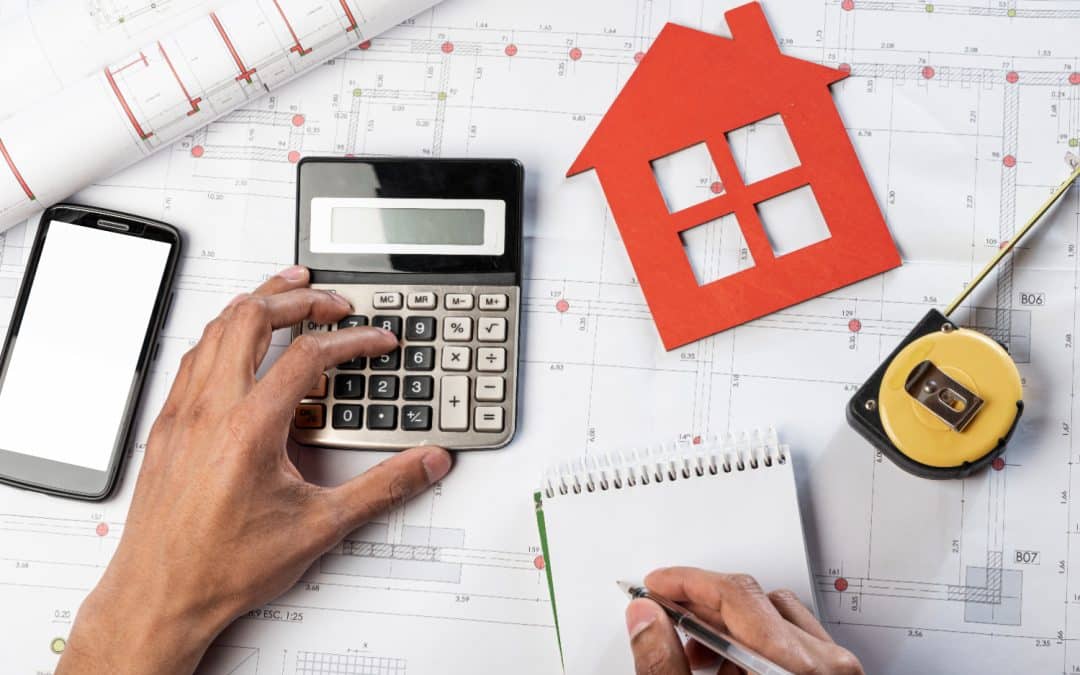Building your dream home is an exciting venture, but it’s crucial to plan your budget carefully. A clear budget helps you keep track of your spending and makes sure you have enough money to finish the project.
Without a good budget, you might run out of funds before your home is completed. In this guide, we’ll walk you through the steps of creating and maintaining a budget for your home build, ensuring your dream stays on track.
Estimating Your Total Project Cost
Estimating the total cost of your home build is the first step in creating a solid budget. To get an accurate estimate, start by researching and gathering information about all potential costs. Here’s a list of major factors to consider:
1. Land Purchase: The cost of the land where you’ll build your home. Prices can vary widely based on location and size.
2. Design Fees: Payments to architects and designers. These fees cover the creation of blueprints and plans for your new home.
3. Construction Materials: This includes everything from concrete and lumber to tiles and paint. Obtain quotes for all major materials you’ll need.
4. Labour Costs: Wages for builders, electricians, plumbers, and other workers. Rates can vary, so get multiple quotes.
5. Permits and Inspections: Fees for building permits and mandatory inspections throughout the construction process.
6. Utility Connections: Costs for connecting your home to water, sewer, and electricity services.
Remember to include a buffer for minor expenses and to consult with professionals for accurate quotes. This upfront research can save you from unexpected financial surprises.
Breaking Down the Main Expenses
Breaking down your main expenses helps you understand where your money is going and allows for better planning. Here’s a simple categorisation of key expense areas:
1. Pre-Construction Costs
– Land Purchase: Cost of buying the land.
– Surveys and Soil Tests: Ensure the land is suitable for building.
– Design and Planning Fees: Payments for architects and designers.
2. Construction Costs
– Site Preparation: Clearing and levelling the land.
– Foundation: Laying the foundation of your home.
– Building Materials: Detailed costs for all construction materials.
– Labour: Fees for contractors, builders, and other tradespeople.
– Interior Finishes: Costs for items like flooring, paint, and cabinetry.
3. Permits and Fees
– Building Permits: Fees to get permission to build.
– Inspection Fees: Costs for required building inspections.
– Utility Hookups: Charges for connecting to local utilities.
4. Post-Construction Costs
– Landscaping: Adding gardens or other outdoor features.
– Furnishings and Appliances: Costs for new furniture and appliances.
– Final Inspections and Certification: Ensuring the building meets all regulations.
Make sure to keep detailed records and receipts for all expenditures, which aids in tracking and adjusting your budget as necessary.
Planning for Unexpected Costs
Even with thorough planning, unexpected costs can arise during your home build. These can include everything from weather delays to changes in material prices. To ensure these surprises don’t derail your project, it’s smart to set aside a contingency fund.
1. Weather Delays: Bad weather can cause work stoppages and delays. These delays might lead to extended rental equipment costs or additional labour days.
2. Material Price Changes: Prices for materials like lumber or steel can fluctuate. It’s wise to monitor market trends and buy materials in advance when possible.
3. Unexpected Site Conditions: Sometimes, the land itself can present unexpected challenges like poor soil quality or hidden rocks that require extra work.
4. Design Changes: Mid-project changes or upgrades to materials and finishes can add up quickly.
To plan for these, set aside at least 10-15% of your total budget as a contingency fund. This extra money can cover any surprises without affecting the main budget. Regularly reviewing your budget and expenses helps you stay aware of how much contingency funds remain.
Tips for Sticking to Your Budget
Sticking to a budget requires discipline and regular monitoring. Here are some tips to help you stay on track:
1. Detailed Planning: Start with a detailed, itemised budget. The more detailed your budget, the easier it is to track and control spending.
2. Regular Reviews: Regularly check your budget against actual expenses. This helps you identify areas where you might be overspending and make necessary adjustments.
3. Prioritise Needs Over Wants: Focus on essential items first. Luxury upgrades can push your budget over the limit. If funds are tight, consider saving those upgrades for later.
4. Get Multiple Quotes: Always get multiple quotes for labour and materials. This practice ensures you get the best prices and can negotiate better rates.
5. Avoid Last-Minute Changes: Minimise design changes once construction starts. Changes can lead to cost overruns and delays.
6. Track Every Expense: Keep a record of every expense, no matter how small. Small, untracked expenses can add up significantly over time.
By following these tips and keeping a close eye on expenses, you can avoid budget overruns and complete your home build successfully.
Conclusion
Creating a budget for your home build in New South Wales is essential for ensuring your project runs smoothly and stays within financial limits. Careful planning and regular monitoring are key components of a successful budget. Be prepared for surprises, make informed decisions, and avoid unnecessary changes during the building phase.
If you’re ready to get started on your residential building project and need expert guidance, reach out to Euroka Projects. Our experienced team can help you navigate through the process efficiently. Contact us today to make your dream home a reality!

